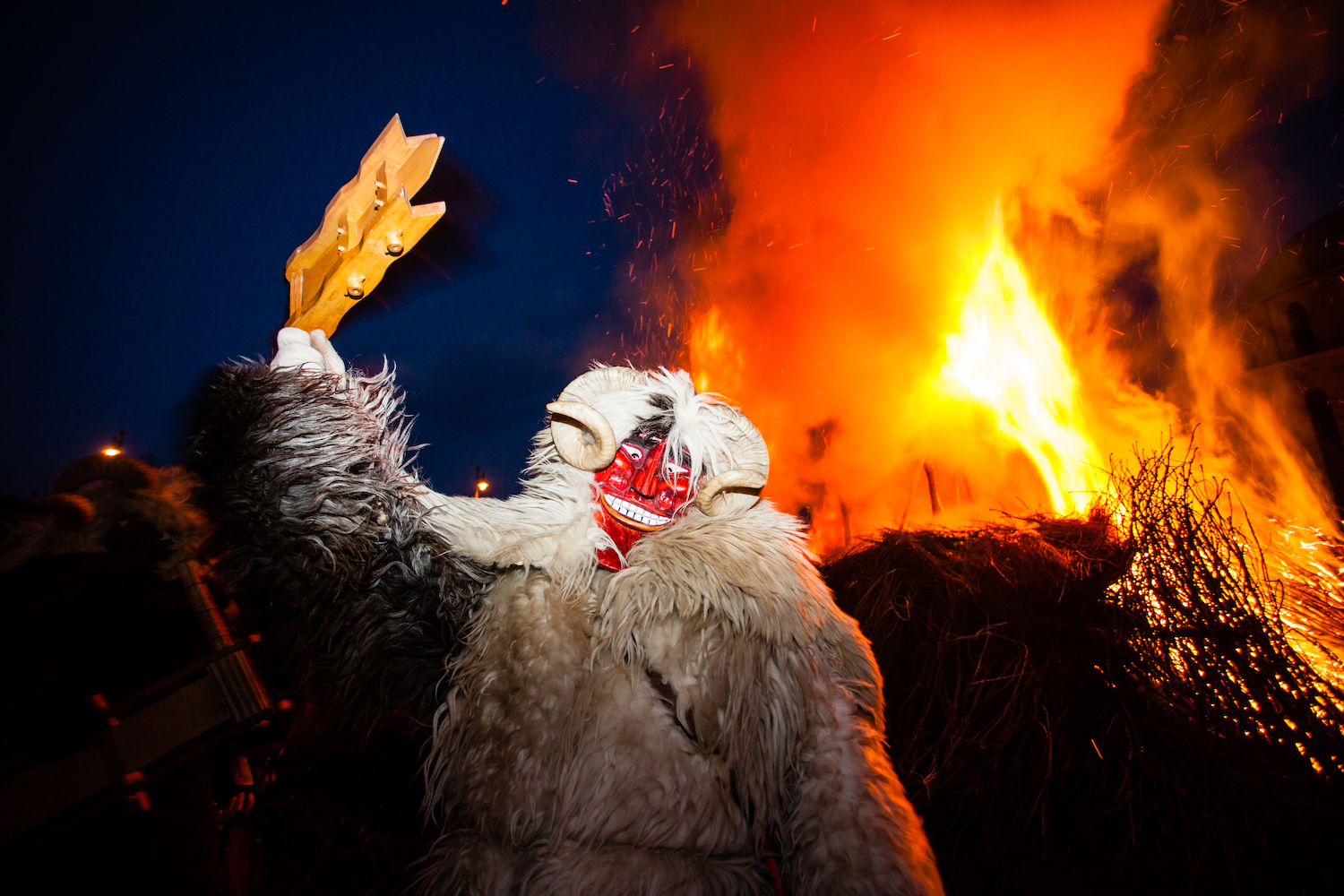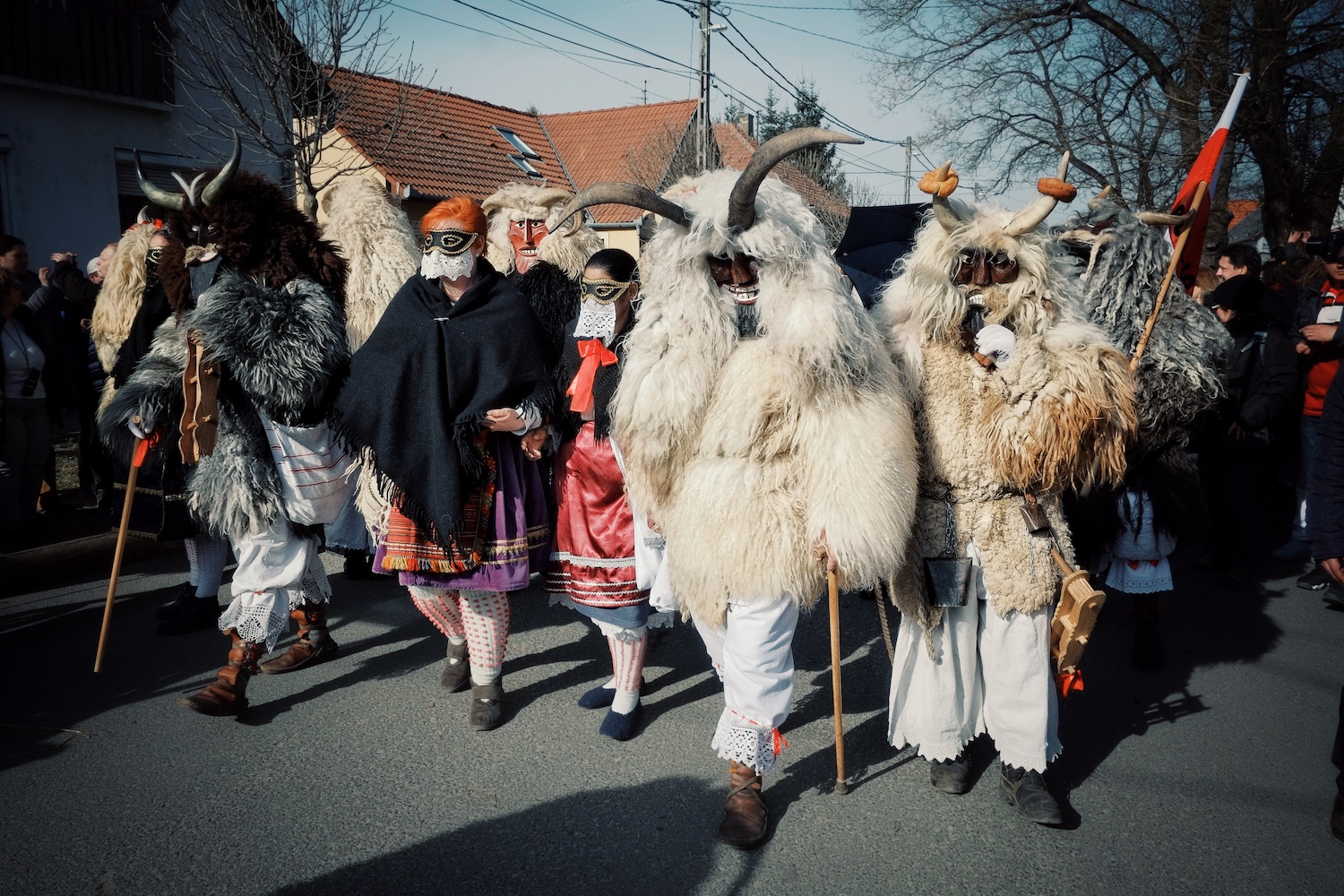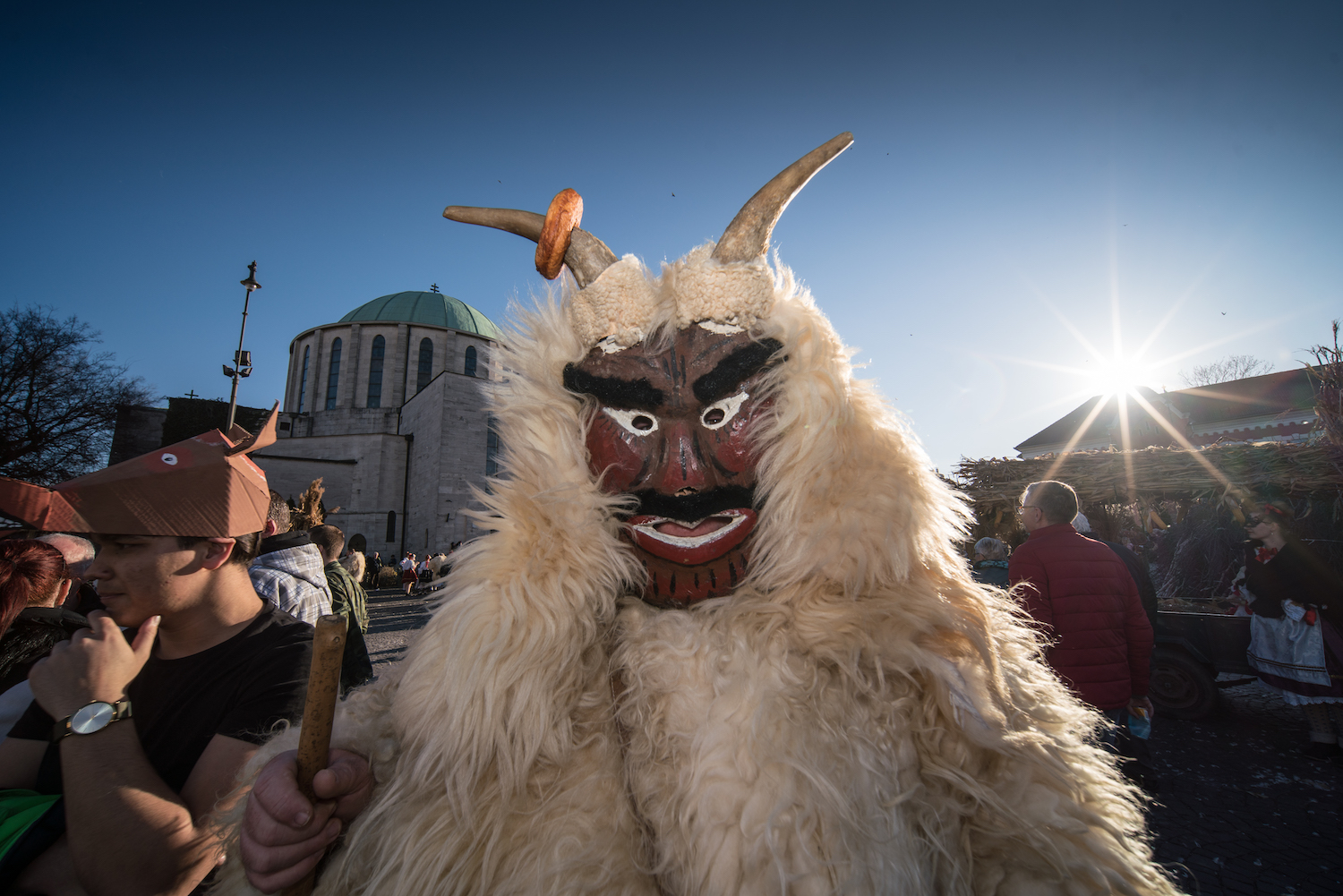Farsang, which translates to “carnival” in Hungarian, is a time of festivities lasting from after Christmas to February, featuring some truly distinctive Hungarian traditions. The Busó-walking is an annual celebration in a small town in Hungary, Mohács, which keeps an old folk tradition alive.
Farsang
Farsang was historically important in Hungarian culture, combining more traditional Christian aspects with elements of older festivities about driving away winter demons over time. As a result, a variety of celebrations begin immediately after the New Year.
The more than a month-long celebration was historically marked by a variety of opulent feasts and excessive drinking, owing in large part to the farmers of the region having a little more free time when the land was frozen solid. Even if it is no longer as popular as it once was, there are still plenty of events to attend. The day of Epiphany, or January 6, when Christmas trees are traditionally abandoned, represents the start of everything.
Farsang, which takes place from January 6 through February, is difficult to pinpoint as a single event. As a result, several gatherings are conducted throughout the season to get people in the mood for spring. Even though things are more organised and in order these days, the largest towns and cities still hold their own Farsang festivals. Schools and kindergartens also traditionally celebrate Farsang, letting kids dress up in costumes and play traditional games. Throughout the month in Budapest, there are a plethora of events taking place at the city’s most popular clubs and pubs. Costume themes are widely used, and might span from simple animal costumes to costumes of popular television shows.
The Busójárás, a series of festivities done in Mohács, a town near the Croatian border, may be the most peculiar Farsang ritual. They’re supposed to scare away the winter spirits. It is so distinctive that UNESCO has designated it as an intangible cultural heritage.
The Busó-walking
Busójárás (Busó-walking) is a tradition of Mohács’ native South Slavic, Šokci community. It is a well-known and widely practised folk ritual for warding off winter. The tradition’s beginnings can be traced back to the pursuit of Turkish armies. The locals were said to hide in the neighbouring wetlands, wearing masks and making loud noises to frighten away the superstitious Turkish soldiers. In actuality, the Šokci people most likely took this custom with them when they came from the Balkans to live here, and it only evolved into its current form here.

The core of Busójárás, according to Šokci traditions, is “poklade,” which means metamorphosis. They take this extremely seriously, spending the holiday in a different state of awareness behind their masks, more in tune with their instincts and free of time and space constraints. Many things are permitted at this time that would not be acceptable in normal life. True Busó tradition requires that one’s face and identity be disguised during the holiday, and some people even replace masks frequently to keep their identity hidden.

The Busó is the major figure in this holiday: he is a monster wearing a wooden mask, an inside-out fur coat, straw-stuffed trousers, and occasionally embroidered stockings called bocskors (traditional laced sandals). A chain or rope, or occasionally a belt, secures the fur coat. The Busó is also always accompanied by a cowbell, clapper, or wooden mace. Other items such as a wooden pitchfork, a washing paddle, a water carrying pole, a bull pizzle or gourds hooked to their belt are often utilised. They frequently circulate the town on carts or adorned small tractors. It has become a tradition for groups of Busós to compete to see who can come up with the funniest and most striking new ideas for the Busó’s appearance while still following the established traditions.
Originally, parties of Busós would walk from house to house, receiving food and drink from the residents in exchange for their good fortune wishes and winter-chasing rites. Their march has evolved into a town-wide festival. Nowadays, activities are centred on the main square of Mohács, with a lot of audio-visual effects: cannons are fired, bonfires are lit, and a variety of loud noises are made.
Vocabulary
| to last | tartani |
| distinctive | jellegzetes |
| tradition | hagyomány |
| folk | népi |
| to combine | ötvözni |
| aspect | szempont |
| element | elem |
| to drive away | elhajtani, elűzni |
| variety | különféle |
| opulent | pazar |
| feast | lakoma |
| owing to | valaminek köszönhetően |
| frozen | befagyott |
| to attend | részt venni |
| Epiphany | vízkereszt |
| to abandon | kitenni, kidobni |
| to pinpoint | meghatározni |
| gathering | összejövetel |
| to conduct | tartani, rendezni |
| spring | tavasz |
| costume | jelmez |
| plethora | számtalan, temérdek |
| peculiar | különös |
| spirit | szellem |
| to designate | nyilvánítani |
| intangible | szellemi |
| community | közösség |
| to ward off | elhárítani, elűzni |
| army | sereg |
| to hide | elrejtőzni |
| wetlands | vizes élőhelyek |
| to frighten away | elijeszteni |
| superstitious | babonás |
| awareness | tudatosság |
| in tune with | összhangban valamivel |
| instinct | ösztön |
| to permit | engedélyezni, megengedni |
| identity | identitás, kilét |
| to disguise | álcázni |
| fur coat | bunda |
| embroidered | hímzett |
| laced | fűzős |
| rope | kötél |
| pitchfork | vasvilla |
| to utilise | használni |
| to circulate | járni, keringeni |
| to compete | versenyezni |
| appearance | megjelenés |
| resident | lakos |
| fortune | szerencse |
| winter-chasing | télüldöző, télűző |
| rite | rítus |
| cannon | ágyú |
| bonfire | tábortűz |


